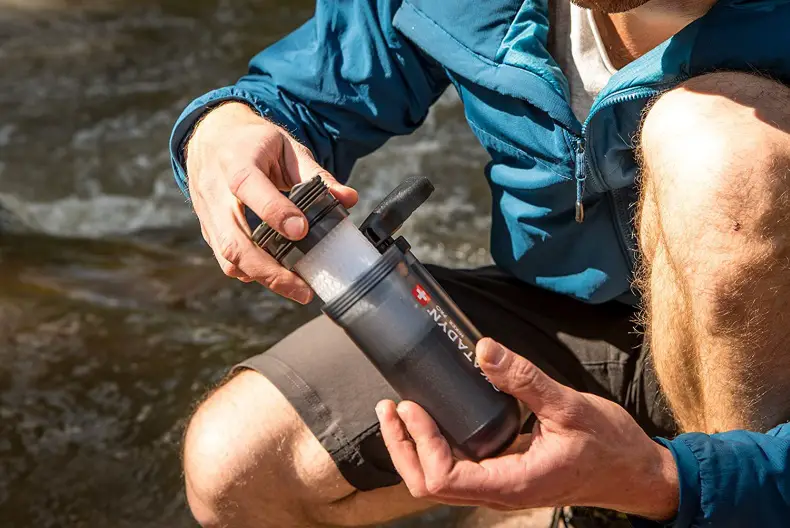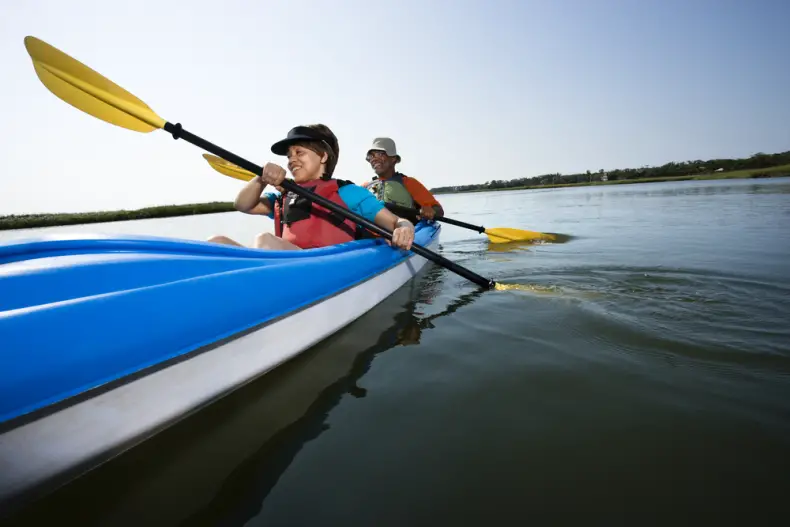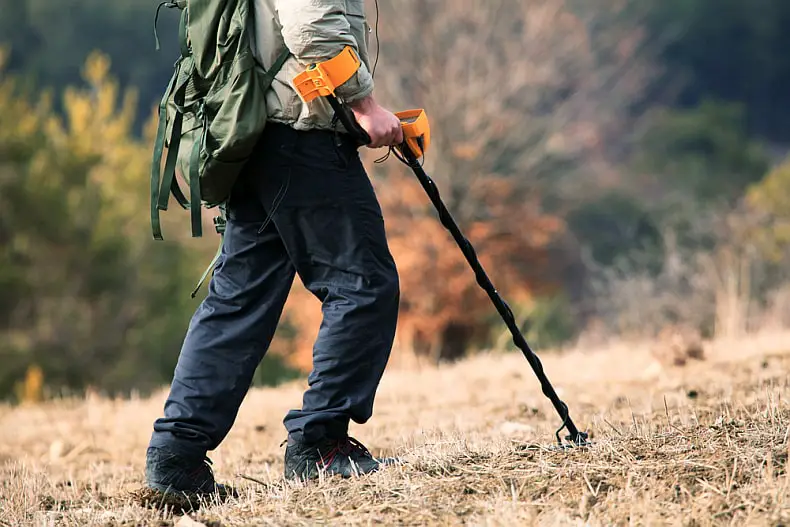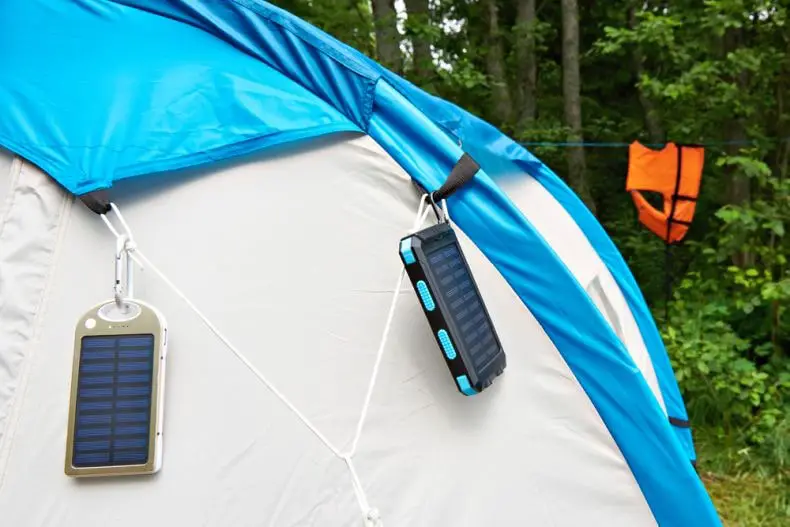Water sleeves in backpacks are all the rage for those that like to go out backpacking for a day or two. They can be wonderful due to the fact that the bag is carrying the water sleeve, making it easier to move about. However, some like to simply take a water filter with them instead.
These water filters can be excellent, allowing you to get water from the world around you and make it safe to drink. Yet many might ask, do backpacking water filters expire?
Many backpacking water filters do expire or no longer work as they should. The good rule of thumb is that one should be replaced, at minimum, every 2 to 6 years. Yet some might need to be replaced before then.
It is best to consider the version you have, and see what is recommended for that specific type.
Seeing as this article is technically all about water filter expiration, we felt it would be good to break down this subject. We’ll also highlight a few versions of water filters, which should give you a more “in-depth” answer. Let’s begin.
Table of Contents
Why Use A Water Filter?

In the wild, you’ll often come across water that can be tempting to drink. However, there is a good rule that most survivalists will tell you about. In that, you can take a chance on drinking water without boiling or filtration if it’s from a moving water source. Think about your normal streams.
If the water is from a still source, such as a typical pond or lake, then you should never drink that without boiling or filtration. Yet either way, you should always try to boil or filter before drinking if it’s possible.
How Water Filters Work:
Now, why is this important? Boiling water can help remove some pathogens and bacteria that can be harmful to your body. Yet boiling alone does not remove ALL of the bad stuff that could be inside the water you drink.
This is the number one reason why filtering is important. It removes most, if not ALL of the bad stuff that your body cannot take in without harming it. This will even prevent several sicknesses from affecting you that come from water sources.
Filtering can be drastically important, which is why most of the water we use in our home is completely “purified” and filtered. Whether it is bottled water, jugs of water, or even something like a Brita Filter for the water you get from your sink.
Shelf-Life vs Use-Life
A lot of people get confused when it comes to the life of their water filters. They’ll see something that claims the shelf-life is extremely long. Therefore, the use-life of the filter must be really good or near the same as the shelf-life, right? Not exactly.
Once a person begins to use one, the life of the filter goes down by thousands of years compared to the shelf-life. Remember this going forward, as it plays a major role in whether or not your filter will work as designed
Carbon Filters
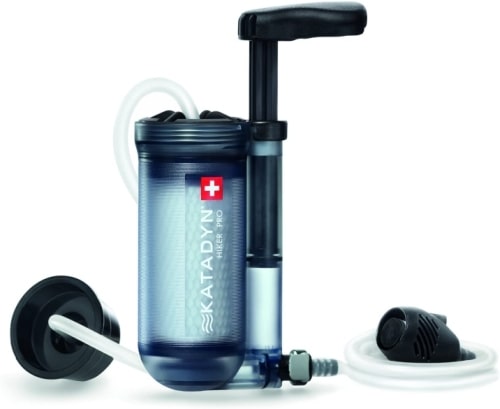
Now we get to the actual filters, first up being the Carbon Filter. These are really cool and do a lot of impressive things in filtering water. Specifically, you’ll purchase an “Activated Carbon Filter” like the Katadyn Hiker Pro.
They work by removing any contaminants through absorption. Due to their porous nature and large surface area, they’re even capable of removing bad odor and taste from water. More importantly, it removes bad particles from the water that you do not need to drink.
Many describe carbon filters like a parking lot full of spaces where bad contaminants are flushed out. Like a parking lot during a hurricane.
While many love them, they do not tend to have a long use-life. They have to be replaced every 4 to 6 months normally, while some can make it up to 12 months (1 year). Yet they cannot go any longer than this. Otherwise, they simply won’t do the job they are required to do.
Ceramic Filters
This is a bit weird to go over, as ceramic and carbon filters can be pretty closely related. Yet they differ quite a lot too. This is why we were quick to refer to the active carbon part above, whereas this will refer to ceramic entirely.
Ceramic filters are thought to be the best and most effective filters, mostly because they get rid of at least 99% of all harmful microbes, pathogens, bacteria, etc. You’d need to be smaller than a micron in size to even have a chance, and most of the stuff that will harm you will be bigger than that.
As a result, they are incredibly effective and well worth your investment. They can cost a bit more, but the worth is just so high that we could never hate them. Of course, the filtration will only work for so long.
The average is 100 to 200 cleanings before the water inside is no longer capable of properly filtering water. On average, replacing them every 6 to 8 months is recommended.
Press Filter
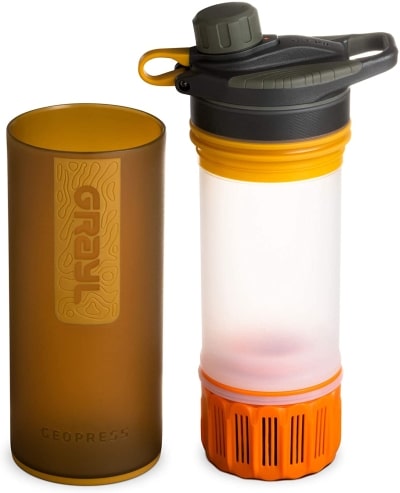
The Press Filter types are very similar to others, except many tend to like them more due to how easy they are to use. Plus, they come in bottle form normally. The push method system works well due to all the parts involved.
One example of this is the Grayl Geopress. Water is filtered through 4 parts, making it go through several steps before it reaches your mouth. This is very important to remember, as it is really working in real-time for you.
The use-life for a press filter can differ by the filter. For the Grayl version we mentioned, the filter must be replaced after 350 cycles or 65 gallons (250 liters) goes through. The company sells filter cartridges on their own, so you could save money by buying this model versus others.
Gravity Filters
You’ll likely recognize gravity filters right off once you see them. They kind of look like the stuff you see in a hospital room that is running into your IV. In reality, they actually do work on the same system. The liquid in your hospital room that is going into your arm is certainly using gravity.
The difference is that gravity filters will have a straw on the other end versus a needle. Of course, the bags are a lot different too in that one is filtering water and the other is not. But the system is the same, which is all that matters here.
How good are Gravity Filters? Depending on the one you get, they can be incredibly useful. They filter water just as terrific as any other filtration system. The bag sleeve can also be placed inside your backpack, where it can filter as you’re walking.
Yet most gravity filters tend to be made out of a sleeve that eventually will expire or no longer work as well as it should. Most experts say to replace them every 1 to 2 months, but this is only for those who will be using them a lot. The limit is 500 gallons, which may not seem like a lot until you’re actually in the wild. You drink far more water than you might realize.
Lifestraw & Crazy Cap

These are two of the most popular water filter types that people enjoy using, but they are not nearly as good as the previously mentioned versions. Lifestraw is popular, and it does filter stuff out pretty well for what it is. Yet it does not get rid of everything and a lot can still get through.
Crazy Cap uses UV Light to kill viruses or bacteria. For those unaware, UV Light can help with this but not all bacteria or viruses have trouble with UV Light. Therefore, you’re not going to get 100% protection with Crazy Cap but it does do a lot of good with its UV Light.
Of course, Crazy Cap’s length of time is truly dependent on the life of the UV Light it uses as its main source of filtration. Meanwhile, Lifestraws tend to need replacing every few years or so on average.
Water Filter Tablets
There are several tablets that people can take with them to purify water. Of course, we’ve mentioned those a lot on the site. There are quite a few tablet types you can use. Our favorite is AquaTabs. You can get a huge pack of them for next to nothing online, so they’re well worth it.
The tablets will only work for one cleaning, which is usually just under one complete liter per tablet. The Katadyn Micropur tablets are capable of similar results, also well worth buying for cleaning water.
The big thing here is that you just need to be sure to use them. They’re fine to keep around for a while when stored in their specific packets. The moment they are opened, however, they do not have much remaining life before being incapable of use.

